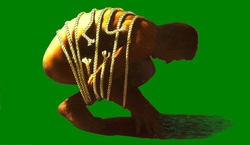 Last week I discussed the soreness that you may get after exercise. This week, I’m turning my attention to using exercise to relieve pain. You may have been lucky enough to catch the BBC One programme “The Doctor Who Gave Up Drugs” with Dr. Chris van Tulleken. If you did, you’ll have seen the almost miraculous transformation of Crystal, a young lady crippled with chronic, severe, nonspecific back pain. Crystal had been prescribed high doses of painkillers for the previous three years, yet the pain still severely restricted her movement, and she was unable to take part in the daily activities of life and work. Years of limited movement had weakened her muscles, worsening the pain further. She had visited various medical specialists, but as the cause of her pain was yet to be identified, she was managing her condition with painkillers. I use the word “manage” with reluctance. In practice, the painkillers were not helping - the long-term efficacy of both prescription and over the counter painkillers is dubious, and the side effects of continued use are many, and well established. Furthermore, they do nothing to address the cause of the pain, so once the effectiveness has started to wane, the sufferer is left not only with their pain, but now also dependent on the painkillers. Dr van Tulleken sent Crystal to a Kung fu master, as a slow and controlled method of exercise. Here is a clip of her first session: You can see Crystal's efforts to mask her pain in her restricted facial movements - and that’s before she tries moving her limbs, when the true extent of her pain becomes clear. Twelve weeks and lots of Kung fu later, Crystal was moving well, and had ceased taking painkillers. Although the programme didn’t go into detail, those 12 weeks were no walk in the park. Crystal had to withdraw from her drugs - a tapered reduction supervised by her doctor - and she worked through a lot of pain before she improved. To what extent her pain had diminished wasn’t made clear, but in a way, that’s not as important as the fact that she was now managing her condition, and had regained her life. Crystal's remission will depend on lifelong continued exercise, whether that is through Kung fu, or other disciplines. It sounds like a huge commitment, but the alternative is a bleak outlook of dependency and pain. She demonstrated the determination and resilience that make me optimistic for her future.
The point made by Dr van Tulleken was that there is insufficient support for sufferers of chronic pain to use exercise as a safe and effective alternative to medication. Telling patients to exercise is all well and good, but without intensive support, it is hard to see how a sufferer of chronic pain could bring themselves to exercise, and keep at it, long term. We see pain as a warning sign that we are hurting ourselves - as it often is. But there are also situations when we have to accept pain as part of a process of recovery. Without specialist support - and I myself am not qualified to advise on what pain is safe to work through - it is instinctive to stop. Furthermore, some types of pain have been shown to be unresponsive to exercise. Where you have been advised by your doctor to keep moving in spite of pain, it can be helpful. For example, attempting to protect arthritic joints by not moving them may lead to a loss of range of movement, and long-term worsening of the condition. However, I will only encourage you to move through pain under the guidance of your medical professional. Likewise, if you are taking painkillers long term, please do not stop or reduce your treatment without first consulting your doctor. A single case study will never satisfy the scientist in me, so next week I will cover the mechanisms of pain management through exercise and the evidence base behind it. |
AuthorFitness and Pilates instructor with a passion for science. Archives
November 2021
Categories |

 RSS Feed
RSS Feed
